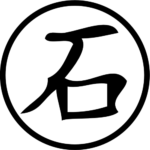Potato scab, caused by bacteria in the Streptomyces genus, is a common disease affecting potatoes. It can reduce yields and affect the marketability of tubers by causing unsightly raised, dark brown or black scabs on their surface.
Causes and Conditions for Potato Scab Growth:
Potato scab is primarily caused by the bacterium Streptomyces scabies (common scab), although there are hundreds of known species. Powdery scab, caused by the fungus Spongospora subterranea, appears almost identical. Conditions favoring scab growth include:
- Soil pH between 5.3 and 8.
- Low soil moisture during tuber development (under 1.5″ in diameter)
- Wet conditions after initial tuber development.
- Limited competition from other soil organisms.
- High fresh organic content such as fresh manure.
- Air temperature of 70°F.
Strategies for Potato Scab Management:
- Crop rotation: Rotate potatoes with non-susceptible crops like cereal grains, corn, or soybeans for three to four years to reduce the buildup of scab-causing bacteria in the soil.
- Disease-resistant varieties: Some potato varieties are resistant to scab, such as Atlantic, Kennebec, Russet Burbank, Red Pontiac, Caribe, Superior, Red Chieftain, and Yellow Finn.
- Sulfur application: Apply sulfur at planting, as a foliar spray, or as a seed treatment before planting to control scab due to its fungicidal properties, and its effects to boost microbial activity in the soil.
- Biological treatments: Use competing organisms (bio-controls) like Bacillus subtilis to reduce scab infection at planting time as a seed treatment.
- Soil fertility: Add organic matter like aged compost or well-rotted manure to the soil to create a healthy soil environment with more organisms present to compete with scab. Avoid adding fresh organic matter to the soil as it contributes to scab.
- Irrigation: Maintain adequate soil moisture during early tuber development (around 85%) for 4-6 weeks after planting to control scab. Increase time between irrigations later in the season to prevent over-irrigation that favors scab growth.
- Soil pH management: Lower soil pH to under 5.3 to stop bacterial growth. This may be difficult to achieve in practice, but is very effective if practical.
- Potassium sulfate: Potentially use potassium sulfate as fertilizer to help provide enough sulfur for scab reduction.
- Adequate sulfur levels: Maintain adequate sulfur levels in potato fields to minimize powdery scab, which directly and indirectly affects the disease’s activity. Elemental sulfur may be applied if the field has time to let the microorganisms break it down into a usable form (So4)
- Seed treatment: Treat seed potatoes with sulfur fungicides or elemental sulfur to reduce scab introduction in scab-free areas or new soil.
Cultural Practices:
Increase soil moisture to 80-85% during tuber initiation until tubers are 1 to 1.5 inches in size (4-6 weeks) to reduce scab incidence. Utilize disease suppressive rotation with green manures like buckwheat, canola, oat, rye, or millet to inhibit Streptomyces scabies.
Chemical Practices:
Use chemical management like seed treatments to maintain good plant health. Biopesticides containing Bacillus subtilis have been shown to reduce common scab by 56%, while Fludioxonil (Maxium) were shown to reduce it by a comparable 58%.
Fertility Practices:
Ensure sufficient sulfur levels in the potato field, as extensive research demonstrates its direct and indirect impact on the disease’s activity. Sulfur alters the soil environment’s biology, stimulating microbial competition and significantly decreasing the scab pathogen’s virulence. Manganese sulfate monohydrate may be applied at 75lb. / Acre during planting (ideally) or first hilling. This is especially beneficial, as potato yield is improved significantly with the synergistic effects of manganese along with the sulfur.
A Note on Sulfur: Between 1990 and 2019, sulfur emissions in the US decreased by 94%. As a result, more sulfur is now needed to supplement what was previously deposited through pollution. It is therefore essential to pay closer attention to its levels in our fields and to no longer rely on past recommendations.
Conclusion:
A combination of these strategies can help reduce the risk of scab in potatoes and improve the yield and quality of the crop in fields that are prone to the disease.





